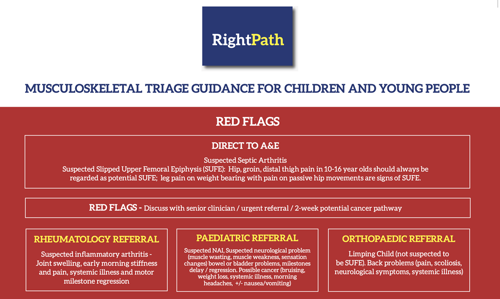Physiological Variants in Musculoskeletal Development
In healthy children there is variation in development of the musculoskeletal system, in particular the lower limbs. It is important to know about them as they are a common cause for concern for parents and a frequent reason for consultation.
Common physiological variants include leg alignment (knock knees, bow legs), flat feet, out toeing, in toeing or toe walking.
Clubfoot or Pes Cavus are not regarded as variants.
It is important to understand gait and motor milestones and know about lower limb development in order to appreciate when observations warrant concern, what conditions to consider and when to refer for a specialist opinion. Often, explanation and reassurance for parents is needed, but practitioners should be confident in knowing when this is appropriate, and when referral for further specialist assessment may be necessary.
Further information is available.
It is noteworthy that pGALS, V-pGALS and pGALSplus tools are assessment aids to prompt further investigations or referrals. Other tools are there to support collection of consistent and important information to aid clinical decision making, such as pREMS or the GALLOP Proforma (Gait and Lower Limb Observation of Paediatrics).
Further information about GALLOP is available;
pGALSplus builds on pGALS and aims to help clinicians to determine if a child with a musculoskeletal problem has a variant (or not), if they need specialist referral (or not) and if so, whether to rheumatology, orthopaedics or neurology/neurodisability.
Further information about a Model of Care involving triage (called RightPath) is available:
A triage guide for physiological variants is available.


